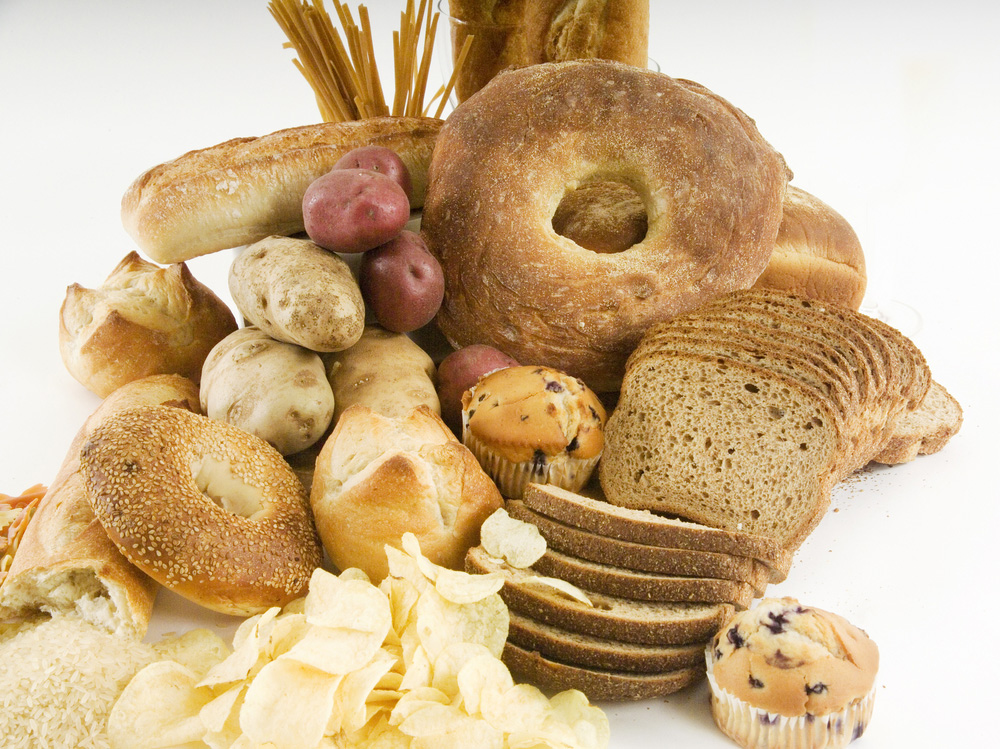Carbohydrate << `kahr` boh HY drayt >> is one of the three main classes of nutrients that provide energy to the body. The others are fats and proteins. Carbohydrates include all sugars and starches and also some other substances, such as cellulose and glycogen. They are the main source of energy for animals and plants.

Carbohydrates are made during photosynthesis, the process by which green plants make food. Animals obtain carbohydrates by eating these plants or other animals. Animals and plants also store carbohydrates for future use. All carbohydrates consist of the chemical elements carbon, hydrogen, and oxygen.
Carbohydrates make up 55 per cent or more of the total number of calories in a well-balanced diet. Foods high in carbohydrate content include bananas, bread, corn, macaroni, potatoes, and rice. Some sources of carbohydrates, such as fruits, vegetables, and whole cereal grains, also contain important amounts of vitamins and minerals. Most candy and soft drinks have a high sugar content. However, they serve only as a source of energy for the body and so do not provide the health benefits of other carbohydrate foods.
Kinds of carbohydrates.
There are two kinds of carbohydrates, simple and complex. Simple carbohydrates have a simple molecular structure. Complex carbohydrates have a complicated molecular structure that consists of simple carbohydrates joined in long chains.
Simple carbohydrates.
There are two kinds of simple carbohydrates, monosaccharides and disaccharides, and all are sugars. Monosaccharides are simple sugars. A disaccharide consists of two monosaccharides.
The principal monosaccharides include glucose, fructose, and galactose. Glucose, a mildly sweet sugar, is the most important carbohydrate in the blood. It is also called blood sugar. Fructose, an extremely sweet sugar, comes from fruits and vegetables. Large amounts of glucose and fructose are in honey. Galactose occurs in food only as part of a disaccharide called lactose.
Among the most important disaccharides are sucrose, lactose, and maltose. Sucrose is table sugar. A molecule of sucrose consists of a molecule of glucose linked to a molecule of fructose. Much sucrose comes from sugar cane and the juices of the sugar beet plant. Pure sucrose has an extremely sweet taste and almost no odor. Lactose, also called milk sugar, makes up about 5 per cent of cow’s milk. A molecule of lactose consists of a molecule of glucose and a molecule of galactose. Maltose, or malt sugar, remains after the brewing process. It is used to flavor some candy. A molecule of maltose consists of two molecules of glucose.
Complex carbohydrates,
also called polysaccharides, are made up of many monosaccharides. Polysaccharides include starch, cellulose, and glycogen. A molecule of starch consists of hundreds or even thousands of glucose molecules joined end to end. It is the chief form of carbohydrate stored by plants. Starch occurs in such foods as beans, corn, potatoes, and wheat. Molecules of cellulose and glycogen, like those of starch, consist of many glucose molecules. Cellulose makes up much of the cell walls of plants. Glycogen, or animal starch, is the chief form of stored carbohydrate in animals.
How the body uses carbohydrates.
Carbohydrates are used by the body as fuel. However, only monosaccharides can enter the bloodstream directly from the digestive system. Disaccharides and starch must be digested in the small intestine before the body can use them. For example, sucrose must first be broken down into glucose and fructose. Lactose must be broken down into glucose and galactose. Starch has to be broken down first into maltose and then into glucose.
After carbohydrates have been broken down into simple sugars in the small intestine, the blood transports them to the liver. The liver changes fructose and galactose into glucose, which is carried by the blood to all the cells of the body. The cells use glucose as fuel for the muscles and nerves and to build and repair body tissues. The liver changes excess glucose into glycogen and stores it. When the level of sugar in the blood is low, the liver changes glycogen back into glucose and releases it into the blood. Glycogen is also stored in the muscles as an emergency reserve of energy. Some of this glycogen is changed back into glucose when the body needs energy quickly.
Cellulose, unlike most other carbohydrates, cannot be digested by the human body and has no food value. But certain amounts of it are useful. It helps maintain the health and tone of the intestines and thus aids digestion. Cattle, goats, and many other animals that eat plants have bacteria in their digestive systems that break down cellulose. The bodies of such animals use the digested cellulose as fuel.
